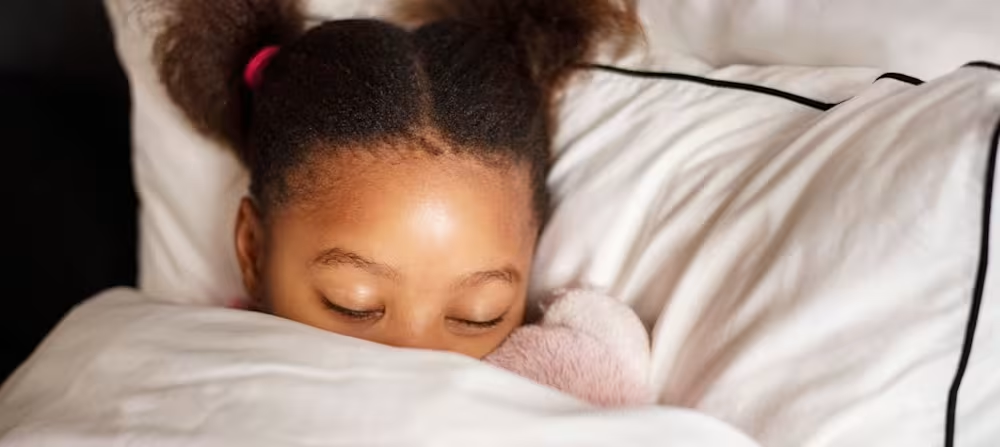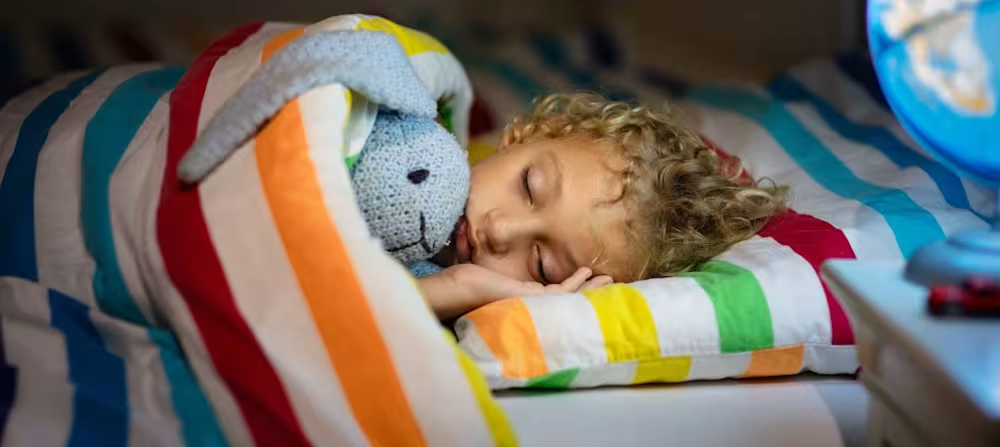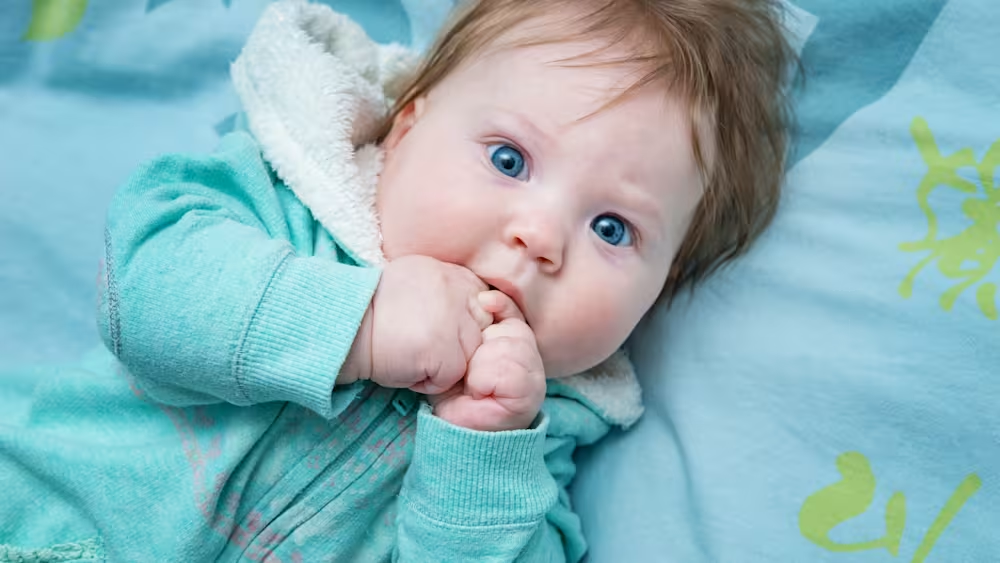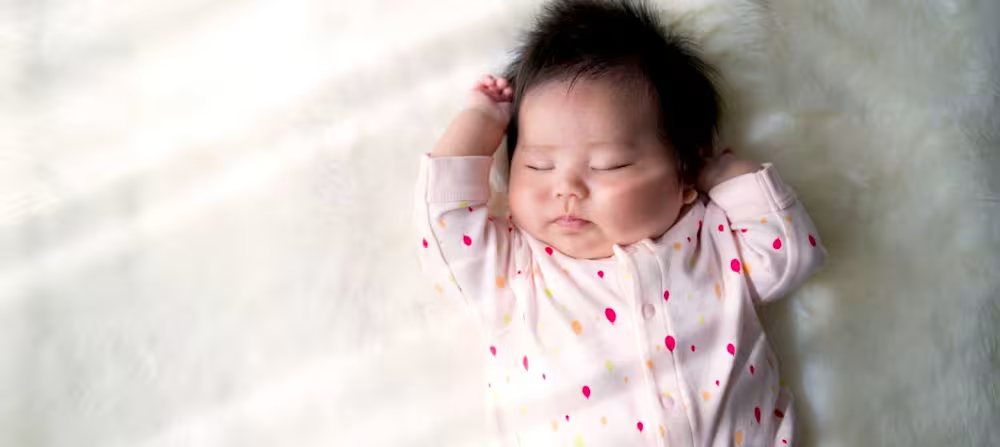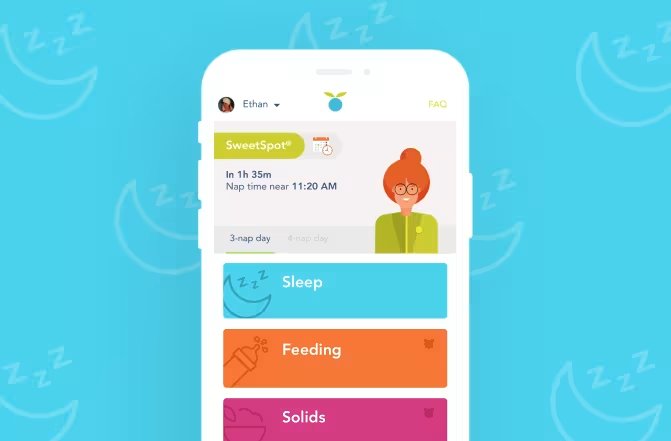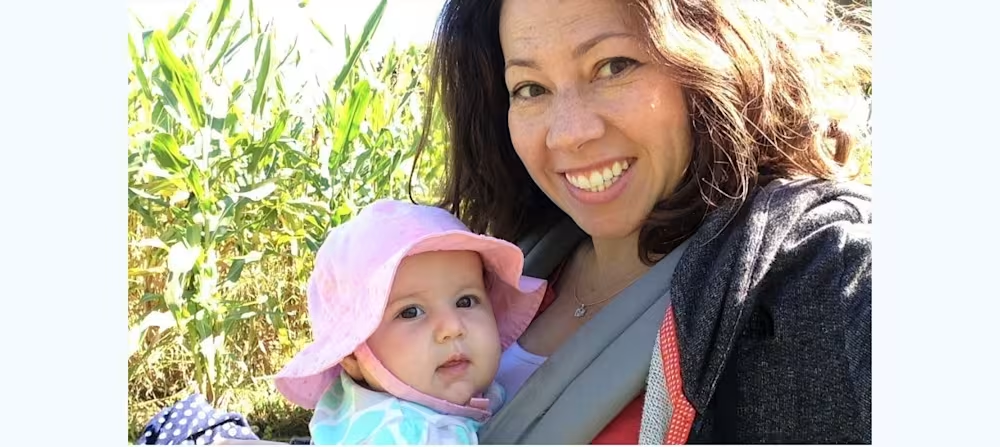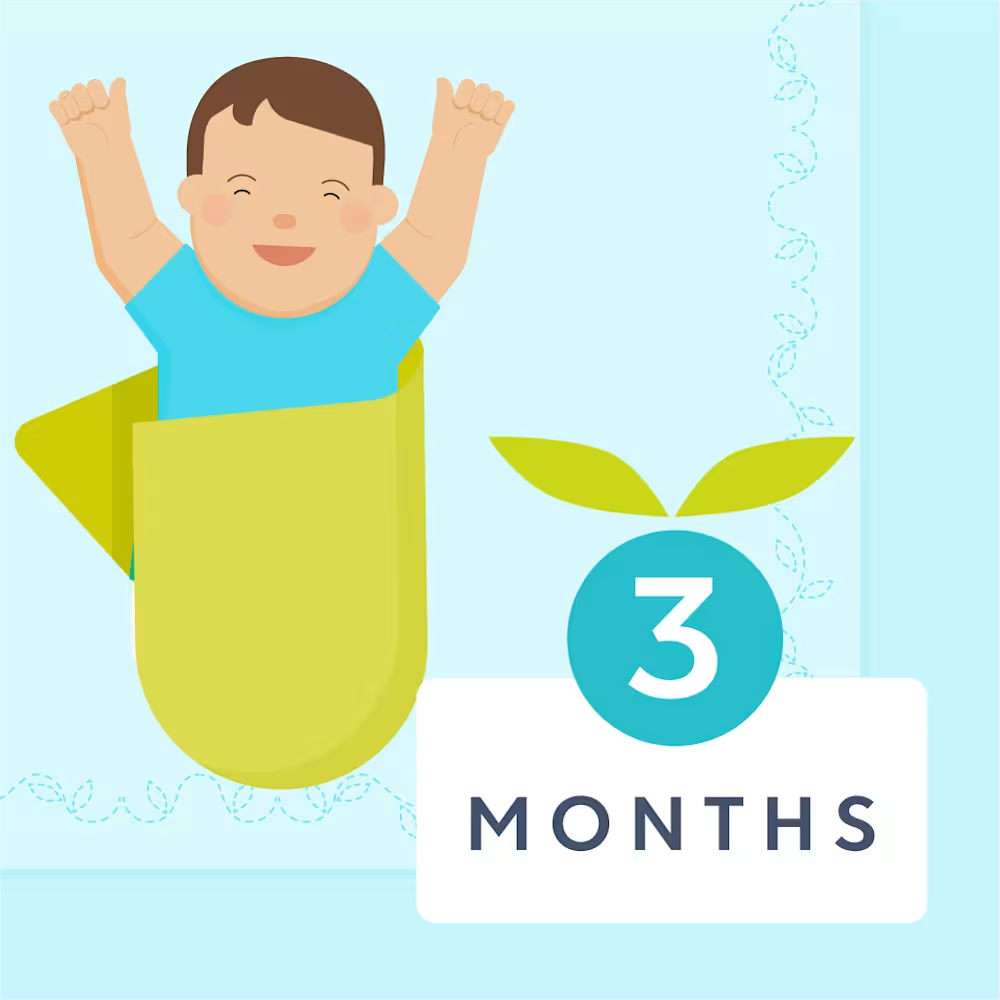Decoding baby sleep cues: Nurturing healthy sleep habits from the start
Updated Oct 17, 2025

It’s so hard, isn’t it? Working out what your new bundle of joy needs and wants from you. Especially in the early stages, their cries and body language can be really hard to decipher and we almost certainly won’t get it right the first time around (mind you, we don’t necessarily master it on the second, or third either!).
However, with some practice, and a lot of patience, we can work to have a better understanding of our baby’s unique signs and signals and what they mean. They have their own little language that we need to learn. The most obvious things we can work on before they start to talk, are their feeding cues (I’m hungry to I’m staaaarrrrriving!!) and also your baby’s sleep cues.
Let’s take a look at these (sometimes hard to decipher) sleep cues in this article.
What are baby sleep cues?
Baby sleep cues are physical and behavioral signs that can help us to decipher the baby’s needs and that they are ready for sleep. In this article, we'll dive into the the sleep cues the baby is showing us. They may involve obvious signs such as yawning and rubbing eyes and other not-so-obvious sleep cues such as general fussiness, a slowing in activity levels, not maintaining eye contact, and “staring into space.”
There's another type of sleep cues as well: cues for sleep we are showing the baby. This involves showing predictable environmental signs such as dimming the lights, dressing the baby in a , and singing a lullaby. These sleep cues can help form a naptime or and will build up the baby’s understanding of what is about to happen next, and thus prepare them for sleep.
Why recognizing sleep cues is important for parents
Sleep cues are awesome because if we react to the early signs of tiredness, it can help us settle our baby for their nap or bedtime without them getting overtired and entering the super fussy zone. This can help make sleep times easier and lead to more restful sleep. As we grow alongside our baby, we learn more about the non-verbal cues they are showing us.
For example, as we play more with our little ones, you may start to notice even the slightest slowing in their activity and energy levels. This is the first step to your baby running out of steam and an early indicator that they would benefit from some rest.
Sometimes, we miss the signs altogether. Our baby gets a “second wind,” a little burst of adrenaline, it powers them through and helps to keep them going. While initially, this seems like a great response, in the long run, it can be part of a cycle that makes it harder. Babies who get too tired can struggle with settling down and staying asleep, making bedtime tricky and leading to shorter, unsettled periods of sleep.
Babies who are overtired can also skip naps, which are important for babies and young children. For sure, there will always be late naps and skipped naps (and please don’t worry about these too much), but as a general rule, great opportunities for restful day sleep will aid night sleep too. To miss out consistently on much-needed day sleep can end up having a knock-on effect on other naps, and you may see an impact on night sleep. It can also affect mood, behavior, and attention levels.
Using sleepy cues and wake windows
Sleepy cues can be helpful in determining when your child is ready to sleep, but those signals can sometimes be hard to decipher! That’s why we also recommend keeping an eye on the amount of awake time in between sleep periods (i.e. wake windows) as well.
There tends to be an average range of awake time where most babies in a particular age group will comfortably be able to stay awake. For instance, will likely include 4 - 5 naps and baby staying awake for about 1.25 - 1.75 hours. Sometimes it makes sense to give your child the opportunity to sleep if they’ve been awake and are nearing the end of that range — even if they’re not showing signs of tiredness. This is particularly true for toddlers and preschoolers, as we’ll discuss in the next section.
For example, most 3 month old babies can comfortably stay awake for 60 - 120 minutes before they need to sleep again. If your baby has been awake for nearly 2 hours and they don’t seem sleepy, we recommend offering a nap or bedtime anyway. It’s quite possible that the signs of sleepiness were subtle and therefore easily missed.
You can check out our sample schedules to see the average . And if your baby is 2 months or older, you can use Huckleberry’s ®, which predicts in real-time when your little one will next be ready for sleep.
Toddler sleepy cues
Note that as babies become toddlers, sleepy cues tend to become more unreliable because they may not show that they are tired, even when they are. Have a child 12 months or older? While you want to take sleepy cues into consideration, we recommend basing naps on an age-appropriate schedule more than when they appear tired.
Deciphering baby's sleep cues
Learning our baby’s individual sleep cues (or sleepy signs) can help us to help them get to sleep when they’re tired, but haven’t yet reached the stage of overtiredness. This may mean we gradually slow the pace, remove the social simulation, and move to a quieter room. Perhaps then closing the curtains, doing a last diaper change, and lying our baby down to fall to sleep.
Acting on the earlier sleepy signs can help us to perform all of the above before your baby falls asleep too soon. You can then avoid super cranky diaper changes or arms-to-crib transfers and also then avoid the risk of waking them!
Learning their cues also helps to pre-empt situations where your baby may get too tired and then get a little fussy or overstimulated. This often makes it harder to settle them. It’s almost always going to be easier to settle a tired but still relaxed baby to sleep than a baby who’s over-stimulated, too tired, and a little stressed.
We’re not always going to get this right. For some babies, you turn around briefly and have missed their one and only fleeting sleepy cue! For others it may be a little more predictable to work out, you may notice a slowing in their activity levels, followed by a yawn and staring out into space. Bingo, off to bed we go.
Once we’ve noticed their sleep cues we can act on them. Getting the baby settled, then starting the or bedtime essentials (such as a diaper change) and a little predictable routine.
Different types of sleep cues
Every baby is different in what signs they show. As noted earlier, your baby may show many, few, or no sleep cues, or they can just be fleeting!
Some babies may start showing sleepy signs nice and early too, allowing you plenty of time to get them down before they get fussy. Others may show signs right at the last minute, going from active to tired in the space of 10 seconds! Depending on what temperament your baby has, you’ll be able to adapt your pre-sleep routines to match your baby's needs.
As you grow as a parent alongside your baby, you’re constantly observing and responding to your baby's cues. They will get easier to decipher — I promise!
There are many different types of sleep cues. Your baby may show just one or two signs, or tick every box! Plan to start your baby’s nap or bedtime routine when you first notice sleepy cues (as shown on the left-hand side). If you're seeing the cues on the right-hand side, you may have missed the ideal window — which means your baby may have a harder time falling asleep and/or staying asleep. Let's take a look at some of the most common signs:
| Sleepy cues | Overtiredness |
|---|---|
| Slowing in activity or interest levels and drowsiness | Fussiness |
| Glazed expression | Crying and upset |
| Yawning | Arching away from parent or caregiver |
| Reduced responsiveness | Fussy or irritability |
| Droopy eyelids or red eyebrows | Eye rubbing |
Behavioral sleep cues
You may notice they may become quite fussy, picky, or clingy and their tolerance levels may drop (my son will go from eating happily to getting cross and manage to swipe all the plates of food off the table in one swoop!).
In general, watch out for the following:
Eye rubbing
Yawning
Drowsiness
Changes in activity level
Reduced responsiveness to you or others
Fussiness or irritability
Highly upset, won’t be held easily
Physical sleep cues
Initially, you may see a slowing in activity levels, your baby may become glassy-eyed or have a glazed expression, start avoiding eye contact, and start staring into space. This may affect what they are doing (and feed into the behavioral sleep cues above) or affect things like feeds.
Watch out for the following:
Droopy eyelids
Glazed expression
Red eyebrows
Decreased body movements
Relaxed limbs
Slower sucking when feeding
Decreased interest during feeding
Creating a sleep routine based on cues
Every baby has their own likes and dislikes, alongside routine preferences and settling strategies. One routine or schedule doesn’t fit all. By all means, use schedules that are age-appropriate for your baby, it helps guide us in the right direction, but then adding in your baby’s own signals will help you perfect it for your little one.
As mentioned earlier, we can also provide signals that can provide cues to your baby that sleep time is approaching, which will help them transition from day to night. This usually involves creating a sleep-friendly environment such as dimming the lights, reducing noise levels, adding , and going to their sleep space.
To help, you can incorporate consistent bedtime rituals and an order of events, for example, your bedtime routine may include going to the sleep space, diaper change and sleep sack on, lullaby or books, cuddles and kisses, and then settling your baby to sleep.
Your nap time and bedtime ritual, length, and steps will also be completely unique to you, your baby, and your family. This routine can develop and grow alongside your baby’s age and needs, as well as you as a parent.
Once we’ve recognized the sleep cues and have performed the mini nap or bedtime routine we can use gentle and soothing techniques to support sleep initiation. With young babies (especially under 4 - 5 months) our techniques are likely to be quite hands-on, involving rocking, walking, patting, or just our presence to help them settle to sleep. Utilizing a as well, it’s likely to be much easier to settle them to sleep.
Takeaway
Baby sleep cues can be varied. The most common sleep cues of yawning and rubbing eyes may (annoyingly) not be what you see in your child! Watching out for signs of tiredness can help you get your baby settled down in the right environment at the right time for their nap or bedtime.
Sleepy cues are one important piece of the big sleep jigsaw and are worth paying attention to as they ultimately help when settling our babies. You’ll also want to keep an eye on the wake time in between sleep periods, as overtired kids have a harder time falling asleep and staying asleep.
Try not to stress if you miss the signs in your little one. Long wake windows (by accident!) and disaster naps are part of figuring it all out. We’ll never get it 100% right.
Baby sleep cues FAQ
Share article:
Note: The content on this site is for informational purposes only and should not replace medical advice from your doctor, pediatrician, or medical professional. If you have questions or concerns, you should contact a medical professional.
Share article:

